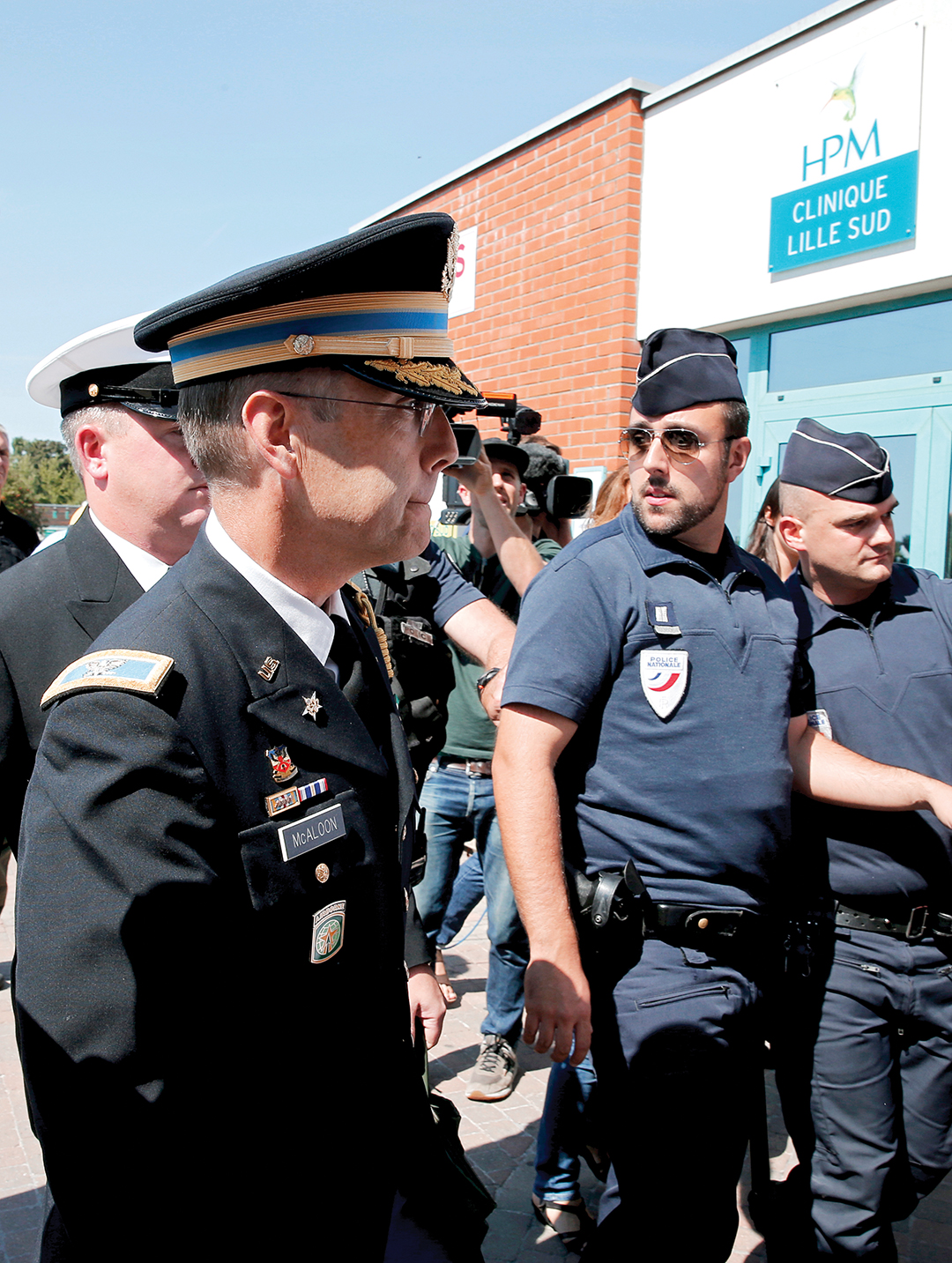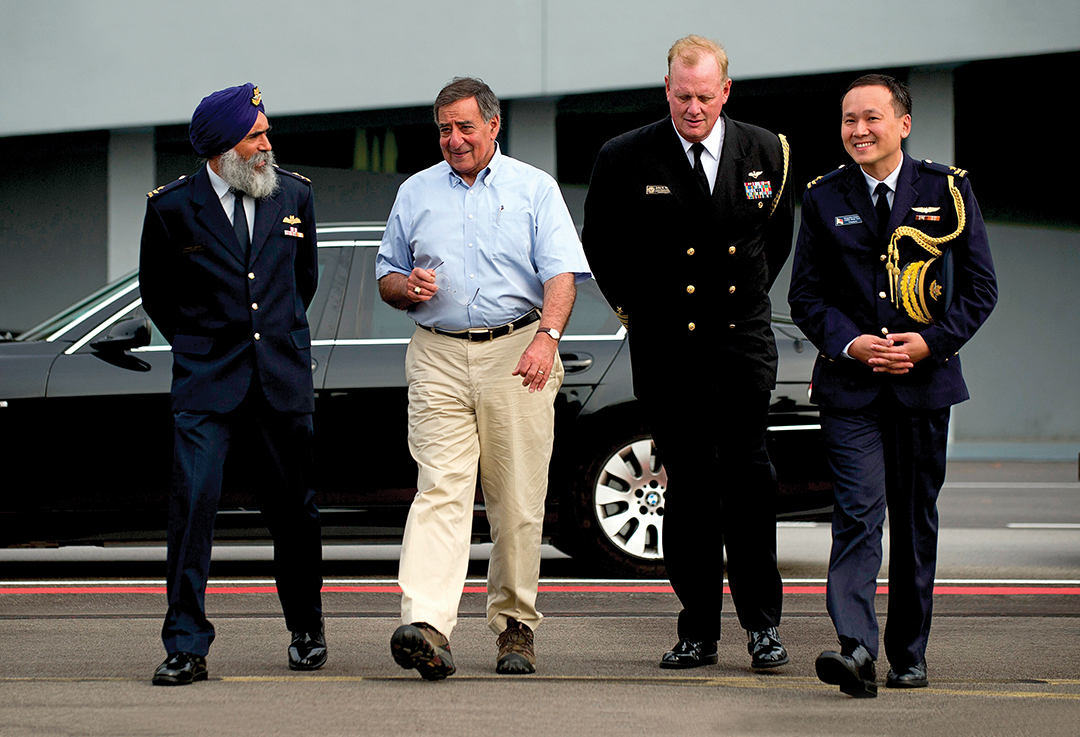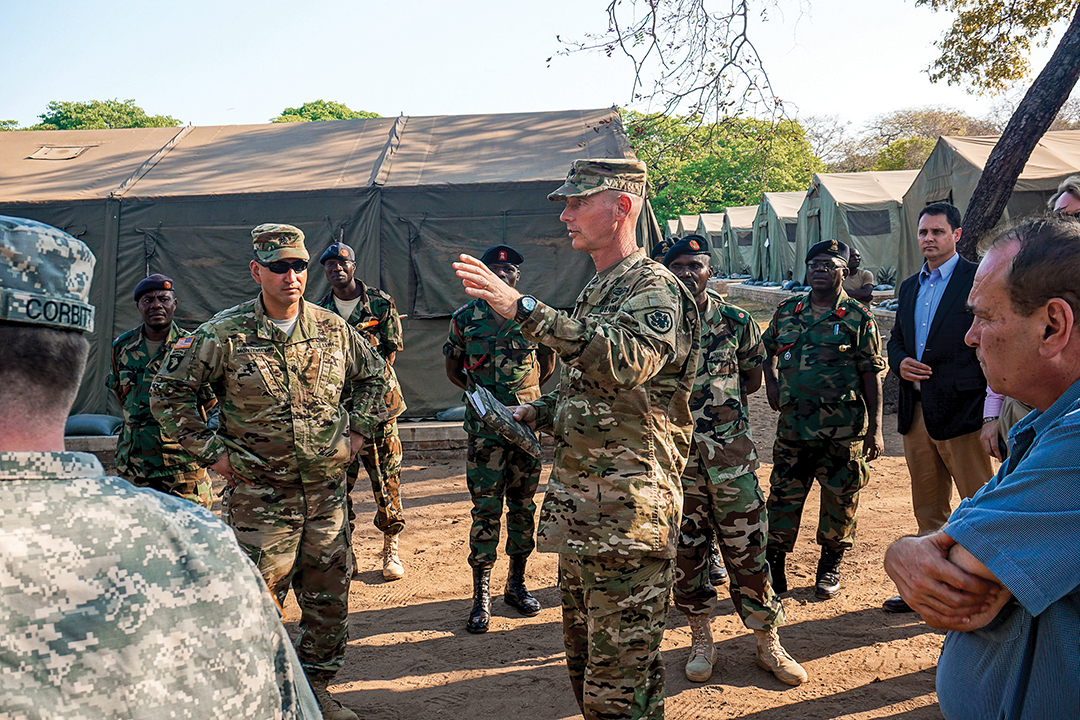A strategy vital to advancing policy initiatives
By Lt. Col. Gwyn A. Carver, U.S. Army
With global uncertainty and regional insecurity on the rise, a marked reduction in the U.S. Department of Defense (DOD) budget, and insufficient resources to advance United States national security interests, how can the DOD maintain its competitive edge? How can it best position itself to effectively protect and engage across the full spectrum — horizontally and vertically, as well as through time and space?
Defense diplomacy is one way to effectively address these questions. According to Juan Emilio Cheyre’s chapter in The Oxford Handbook of Modern Diplomacy, defense diplomacy is best defined as the pursuit of foreign policy goals through the deliberate employment or denial of defense resources and capabilities. Employed since the age of antiquity, defense diplomacy is best applied through measured international defense relations, negotiations and activities. In an age shrouded by unending global conflict and regional strife, clearly defined and professionally executed defense diplomacy is more vital than ever to effectively promote United States foreign policy initiatives, uphold national security and defense-related strategies, and advocate U.S. interests regionally and globally. Economic and resource-driven ambitions, coupled with famine, drought, disease, overpopulation, increased rates of youth unemployment and poverty create a continuum of tension and conflict. As Cheyre points out, when defense diplomacy fails, this progression of perpetual instability often results in increased conflict and sometimes war. When employed effectively, defense diplomacy can be a tremendous deterrent to war while simultaneously promoting political, social and economic advancement.

America’s ‘Force of the Future’
While serving as chairman of the U.S. Joint Chiefs of Staff in 2012, Gen. Martin Dempsey remarked, “We’re at a strategic inflection point, where we find a different geopolitical challenge, different economic challenges, shifting of economic and military power. And what we’re trying to do is to challenge ourselves to respond to that shift and to react to that strategic inflection point and adapt ourselves.” When former Secretary of Defense Ashton Carter took office in 2015, he expressed his intent to define, build and develop a “Force of the Future” as one of his major policy initiatives. It was described as an effort to shape U.S. forces to be best postured to anticipate and respond to a future operating environment that is likely to be defined more by an ambiguous time and space dimension, rather than by a more concrete physical dimension.
The aim was to identify, develop and enhance the DOD’s ways and means to advance defense capacity, capabilities and response mechanisms. While much of the Force of the Future initiative has focused on force readiness, including improved personnel management, human resources, recruitment, retention, and talent management practices and procedures, the DOD has emphasized that the overall strategic intent and vision of building and improving the defense sector in these domains is to develop an overall force that is more innovative, well-rounded and best postured to advance U.S. defense initiatives across the full spectrum. This includes a Force of the Future that is proactive, innovative, resilient and diplomatically savvy.
To effectively create the Force of the Future — a globally revered, superior, universal, combined and joint force — one must also consider the necessity of refining the nation’s ability to exercise strategic patience, identify U.S. equities and strategic intent, and engage in sound defense resilience throughout the defense diplomatic arena and beyond. America’s Force of the Future requires defense professionals to not only advance the nation’s defense priorities and initiatives, but to simultaneously merge and integrate these priorities and initiatives within a continuum of other key domestic interagency enterprises. Additionally, the DOD must consider how to best nest and complement our national interests with allied multinational defense partner priorities and objectives. It would be remiss, said Mac Thornberry and Andrew Krepinevich in their 2016 article in Foreign Affairs, if second- and third-order implementation effects were not considered, as they relate to nongovernmental organizations, research and development actors, corporate associates and private-sector partners.
The Force of the Future must be postured to anticipate strategic inflection points well in advance, instead of merely reacting and responding to current and emerging global threats, as has become the norm over the past decade. To further refine national defense resilience at the strategic level, we must be more proactive. We must engage in prevailing, strategically minded, perceptive and well-strategized defense diplomacy as we continue to acclimate to an ever-evolving and shifting threat environment. We must be more adaptive, while remaining situationally astute and internationally-minded. We must further refine and revise defense engagement to cover an infinite continuum of time and space that spans and converges across multiple dimensions, as outlined by retired U.S. Army Gen. Stanley McChrystal in his 2015 book Team of Teams: New Rules of Engagement for a Complex World. Prioritizing the importance of sound defense diplomacy as a critical component of the Force of the Future will enable the DOD and other agencies to best align and posture our defense forces to successfully engage fluctuating universal norms and realities along with future realities not yet envisioned. Progressive defense diplomacy resides at the core of effective strategic defense policy, strategy, representation, negotiation, development, coordination and engagement. According to the U.S. National Intelligence Council’s report, “Global Trends 2030: Alternative Worlds,” innovative defense diplomacy is a critical component of a force that is built, developed, and refined to remain globally responsive and regionally engaged.

A rich history
The use of military force has long been considered and utilized by nations, alliances and coalitions as a last resort when diplomacy fails and national, bilateral and/or multinational allied interests are at stake, as Cheyre articulates so well. As the use of military force is not generally the most economically sound of policy options, he attests, the decision to employ it is traditionally reserved for the most severe situations — for example, instances when diplomacy, development, sanctions, diplomatic persuasion and negotiation have failed to attain a desired end state. There are also occasions when a nation’s or international organization’s security interests are threatened so greatly that there remains only one option to defend sovereignty and interests.
While Napoleon Bonaparte formalized the concept of appointing military officers to observe, collect and report on the full spectrum of issues that might be of interest to France’s political leaders, defense diplomacy may be traced back even further to the remarkable military commanders and representatives of the Peloponnesian wars and Roman Empire. The Duke of Richelieu also deployed senior military officers to serve as defense diplomats. According to Cheyre, these officers were charged with coordinating and deconflicting defense initiatives with allies. They also noted and reported back to the duke concerning key allied military defense technological advances spanning the full spectrum of tactical, operational and strategic developments. Subsequently, defense diplomacy was formally recognized in 1857 when military officers were officially accredited as military attachés and presented full diplomatic status while serving abroad in overseas missions and delegations.
Since the late 19th century, American military officers have been formally integrated and incorporated to serve as key interlocutors within the diplomatic arena. Appointed as senior defense officials and defense attachés, these officers serve as defense diplomats and representatives on behalf of the president and the DOD. In Career Diplomacy: Life and Work in the U.S. Foreign Service, Harry Kopp and Charles Gillespie described how these soldier-statesmen — foreign area officers and defense attaches — represent the nation’s senior defense leaders to their host nation defense ministry counterparts while serving within U.S. embassies and missions abroad.
Whether supporting U.S. interagency efforts or serving forward-deployed, enveloped in host nation political, cultural, economic and societal medians, DOD foreign area officers remain best postured, both strategically and geographically, to engage in host nation-related issues. As a result, foreign area officers remain an integral part of the DOD as it strives to shape and further define the Force of the Future initiative and engage in an ever-evolving and fluctuating global threat arena across an increasingly complex time-space continuum.

Soldiers and statesmen
Aristotle remarks in Book IV of Politics that “the true legislator and statesman ought to be acquainted, not only with that which is best in the abstract, but also with that which is best relatively to circumstances.” Today’s innovative, globally responsive and regionally engaged defense diplomats serve as the U.S.’s first line of defense. These officers are charged with providing senior military and civilian decision-makers with sound political-military advice and options, formulated on a wide array of personal engagement, regional exposure and international experience, coupled with a baseline of practical wisdom, intuitive reasoning, rational principle and moral virtue. They work, live and continuously engage with host nation defense and security personnel to anticipate and respond to myriad strategic conjectures and inflection points. Foreign area officers coordinate and deconflict with U.S. interagency national security staff, allied partners, combatant commands, joint forces commands, international governmental and non-governmental partners, and even serve as conduits to negotiate cease-fires and other diplomatic, defense-related activities and efforts.
Conclusion
Although it may appear to be somewhat of a paradox, Cheyre maintains that the emergence of well-strategized and effectively coordinated defense diplomacy is one of the key diplomatic instruments that nations can call upon to deter war and promote peace. If properly managed and implemented, defense diplomacy can serve as an extremely powerful and influential tool and, as Cheyre articulates with such aplomb, an “instrument of statecraft, by bringing to bear the manifold dimensions of both soft and hard power on any given issue.” As we continue to further shape, refine and posture ourselves to define, build, and sustain the Force of the Future, it is critical that defense diplomacy serve as an integral part in this process to further advance and promote strategic security and defense interests worldwide. Innovative, persuasive, globally responsive and regionally engaged, defense diplomacy lies at the heart of the Force of the Future as we work collectively with domestic interagency partners, as well as with bilateral, multinational and international allies, to deter and counter the most severe disputes and prevent escalations of violence throughout the 21st century and beyond.


Comments are closed.